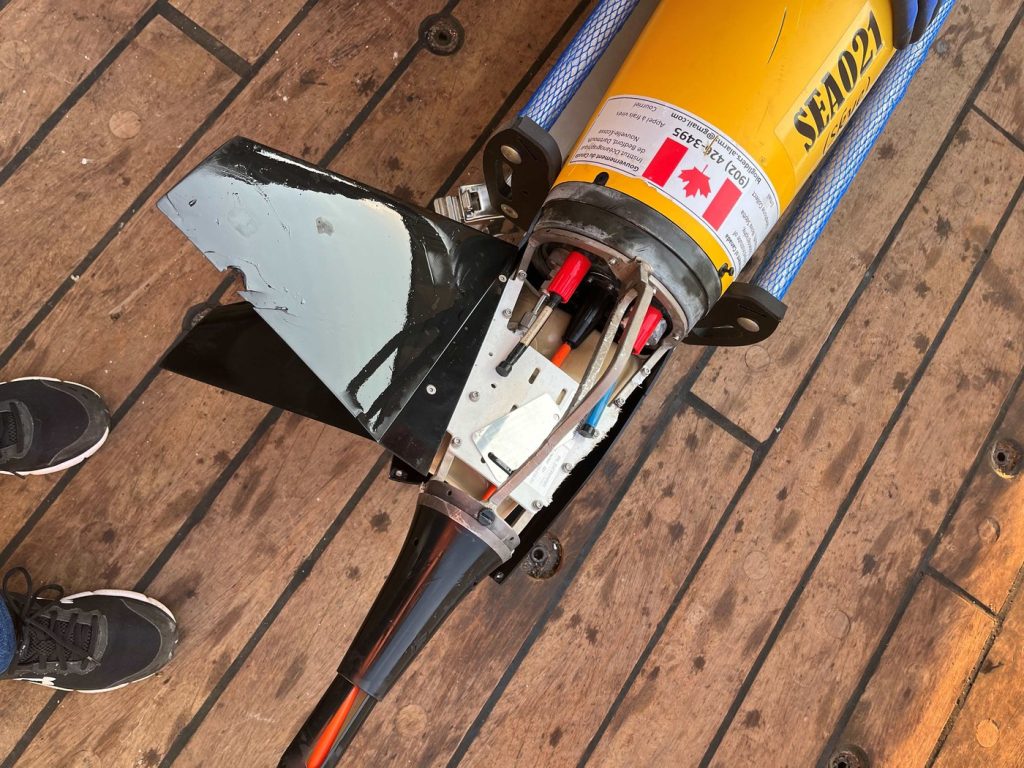Ocean research device victim of great white shark attack off Nova Scotia shore

HALIFAX — A device used by researchers with Fisheries and Oceans Canada appears to have been the victim of an attack by a great white shark 300 metres under water off the coast of Nova Scotia.
Clark Richards, a research scientist with the federal department, said in an interview his colleagues are confident the bite marks on one of their ocean gliders are from the infamous predator. The serrated edges of the marks, and the pattern of the attack give away the culprit, Richards said Tuesday.
The glider’s movements, which were tracked by researchers, and damage to the device would indicate the shark attacked the bright yellow, two-metre-long device twice before the glider resurfaced.
Advertisement
“The shark probably hit it down deep, thought it injured it, waited for it to drift up, and then probably took another crack at it,” Richards said.
Fisheries and Oceans Canada sends autonomous gliders into the ocean to gather data on salinity and temperature and to track small particles in sea water. At around 9 a.m. on Sept. 22, Richards said one of the five gliders in the program was about 300 metres below the ocean’s surface when it suddenly malfunctioned “and came up to the surface in distress.”
“This triggered an alarm … we looked at the data and couldn’t really tell what was going on, except that it was clearly having a hard time actually gliding.”
The shark had bitten into the body of the device and taken off two of its wings, Richards said, but “miraculously” the damaged glider was able to keep moving and return to the surface, where researchers recovered it.
Damage to the aluminum frame around the outside of the device highlights just how strong the glider’s attacker was, Richards said.
Advertisement
“This is a strong piece of equipment on the glider that was completely bent at a 45 degree angle. So whatever got its teeth on to the back end of that glider, not only left all these gouges and teeth marks in the plastic bits, but actually managed to bend a solid piece of aluminum.”
These rocket-shaped devices move slowly through the water, gliding up and down as they change their buoyancy using a system that pumps oil in and out of a plastic bladder.
Richards said “incredibly,” the shark didn’t puncture the bladder — which meant the glider could continue to float up and down in the ocean until researchers retrieved it. “It could itself keep away from the surface where it’s more at risk to other attacks or ships.”
Canadian government scientists on a British research ship were able to pick up the glider on Saturday. The device, purchased for $250,000 about eight years ago, will be repaired, Richards said.
The researcher said his shark-expert colleagues tell him it’s somewhat unusual for a shark attack to happen so deep in the ocean.
Advertisement
“Being 300 meters down, it’s pretty dark down there. But you know, clearly this yellow-coloured tube was enough of an interesting looking thing that it decided to give it a chomp,” he said.
This report by The Canadian Press was first published Oct. 8, 2024.
Lyndsay Armstrong, The Canadian Press
